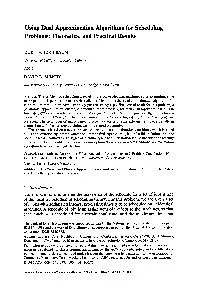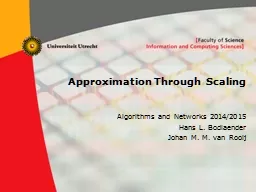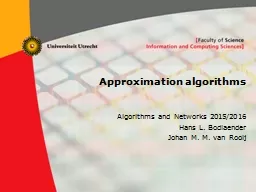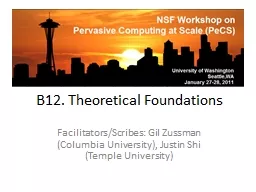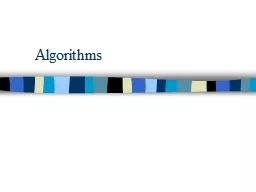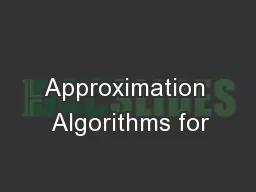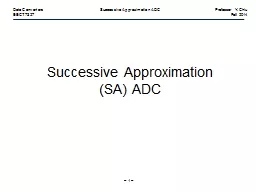PDF-Using Dual Approximation Algorithms for Scheduling Problems Theoretical and Practical
Author : tatyana-admore | Published Date : 2014-12-11
HOCHBAUM University of California Berkeley Calijornia AND DAVID B SHMOYS Mussuchasetts Institute of Technology Cambridge Massachusetts Abstract The problem of scheduling
Presentation Embed Code
Download Presentation
Download Presentation The PPT/PDF document "Using Dual Approximation Algorithms for ..." is the property of its rightful owner. Permission is granted to download and print the materials on this website for personal, non-commercial use only, and to display it on your personal computer provided you do not modify the materials and that you retain all copyright notices contained in the materials. By downloading content from our website, you accept the terms of this agreement.
Using Dual Approximation Algorithms for Scheduling Problems Theoretical and Practical: Transcript
Download Rules Of Document
"Using Dual Approximation Algorithms for Scheduling Problems Theoretical and Practical"The content belongs to its owner. You may download and print it for personal use, without modification, and keep all copyright notices. By downloading, you agree to these terms.
Related Documents

